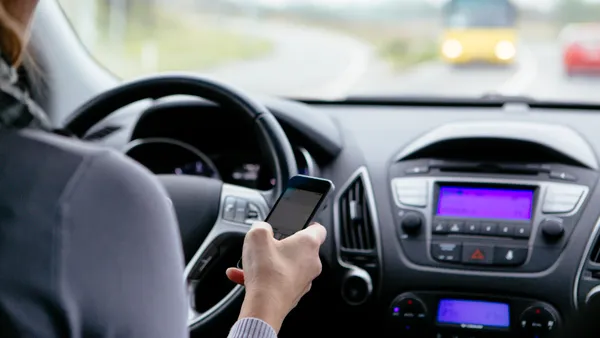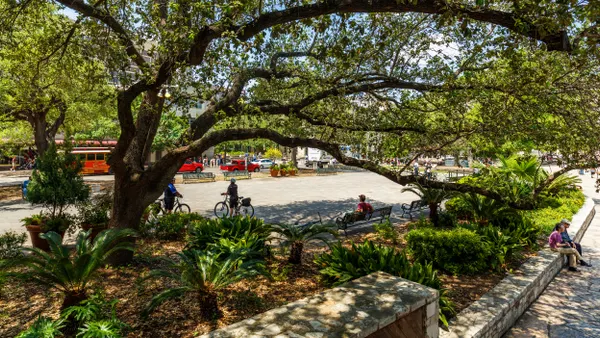Dive Brief:
- Ride-hailing companies contribute to congestion in cities, but their share in relation to other traffic is relatively low, according to an analysis by transportation consultancy Fehr & Peers that was jointly commissioned by Uber and Lyft. The study found that approximately 97% of total vehicle miles traveled (VMT) in cities come from personal and commercial vehicles, while ride-hailing makes up about 3%.
- The study examined VMT in six metropolitan areas — Boston, Chicago, Los Angeles, San Francisco, Seattle and Washington, DC — on weekdays and weekends in September 2018. VMT from Uber and Lyft was 1-3% in each of the metro areas, and 2-13% in the core/central city areas of the regions. The report compiled trip data from the ride-hailing companies as well as information from the Federal Highway Administration (FHA), state Departments of Transportation and metropolitan planning organizations.
- The study also quantified how many ride-hailing VMT are with a passenger in the vehicle. About 33% of VMT are attributed to drivers waiting for a ride request, 10% were drivers traveling to pick up a passenger and 54%-62% were when passengers were in a vehicle.
Dive Insight:
When examining ride-hailing VMT in the city centers, San Francisco came in the highest at 12.8% and Seattle was the lowest at 1.9%. In the middle were Boston (7.7%), Washington, DC (6.9%), Chicago (3.3%) and Los Angeles (2.6%). The varying numbers indicate ride-hailing does not have an equal effect on all cities.
Some have suggested this study means Uber and Lyft are finally "admitting" they contribute to traffic congestion in cities. That's a notable revelation considering the companies have long stated their goal is to get more cars off the road.
The perceived increase in congestion from ride-hailing has prompted city leaders across the country to implement or consider additional ride-hailing taxes or fees, with most of the extra revenue going toward transit or transportation safety projects. Last year, New York became the first city to regulate ride-hailing when it implemented a cap on licenses.
Ride-hailing now has existed for about 10 years, and this study quantifies information that cities have been seeking to assist with traffic planning and congestion mitigation. However, it only shows data from one point in time, not change over time. That makes it difficult to predict if transportation plans should incorporate ride-hailing strategies for the numbers at this point in time, or if the percentages will expand and transportation plans will need to further adapt. This study also doesn't address how much ride-hailing might be cutting into public transit ridership.
The breakdown of time spent traveling with passengers in a vehicle is an interesting point that could have implications for future governmental policies. About one-third of ride-hailing drivers' time is spent waiting for a ride request. Cities could look at strategies for getting those drivers out of traffic, such as instating "idling zones" similar to taxi stands.
Representatives from both Lyft and Uber highlighted the low number of VMT attributed to ride-hailing, and pledged to continue working with cities on traffic mitigation strategies, including congestion pricing. Chris Pangilinan, head of global policy for public transportation at Uber, wrote in a Medium post that the company hopes "the results of this study will inform future mobility policies at the local and regional level." Peter Day, head of policy research analytics at Lyft, said the company is "excited to collaborate with cities to find smart, sensible solutions together."
Given the small proportion of VMTs registered by ride-hailing services, cities wishing to reduce congestion might do well not to just target those companies. The data implies a comprehensive traffic mitigation strategy would achieve better results by targeting personal and commercial vehicle use as well as ride-hailing companies.











